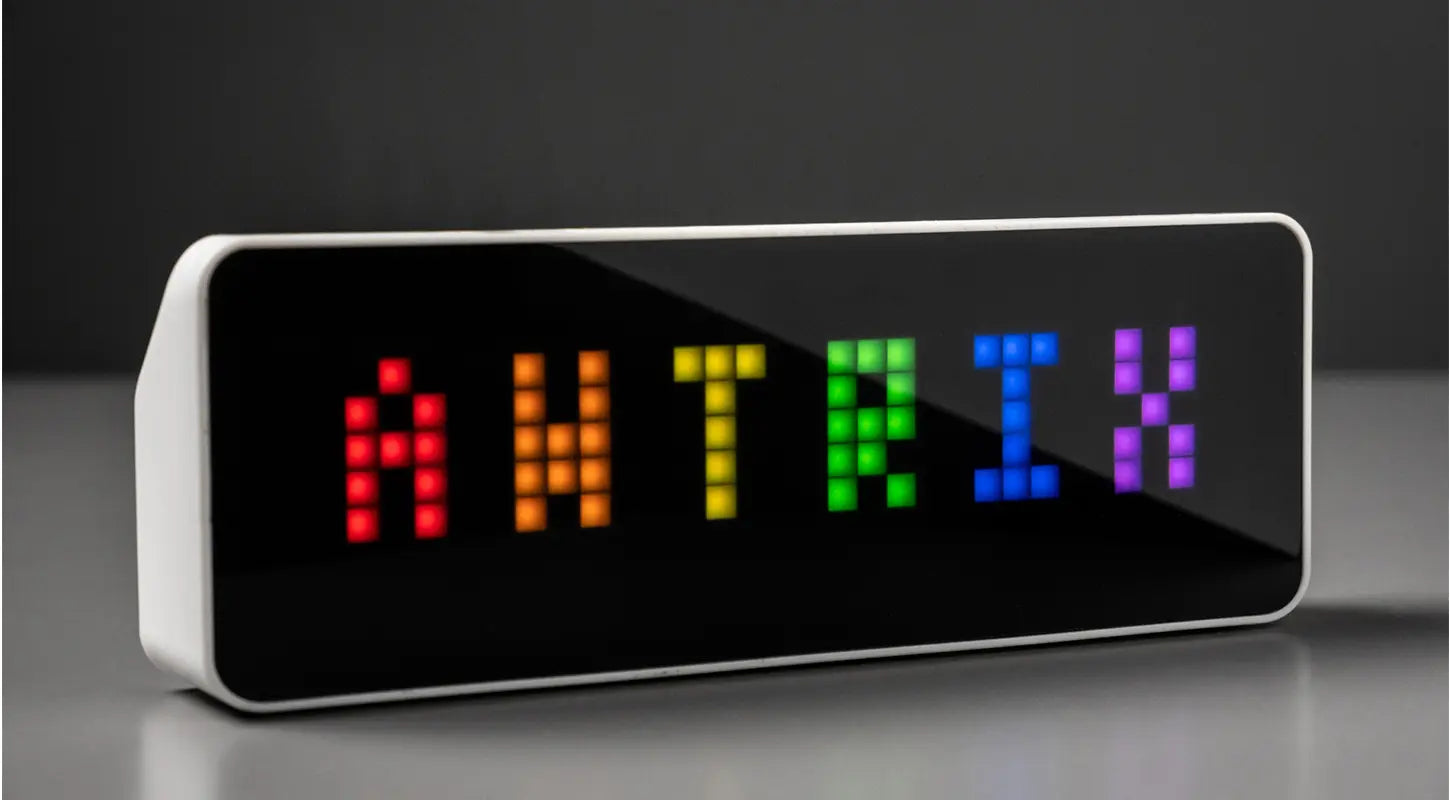Introduction
In the digital cosmos, where every iota of visual information holds significance, the core essence of display technology often goes unnoticed. Among the many unsung heroes of crisp displays and high-resolution visuals, Pixel Clock or Pixel Frequency holds a pivotal role. This cornerstone dictates how swiftly pixels are driven to the display, thus impacting the visual quality and rendering. Choosing the right pixel clock is akin to tuning a piano, where every note, or in this case, pixel, must be in perfect harmony. In this exposition, we will unravel the concept of Pixel Clock, and its operation, and guide you through the selection process.

What Is a Pixel Clock?
Pixel Clock, also known as Dot Clock, is the heartbeat of any digital display. It is the oscillator frequency responsible for rendering pixels on the screen. Each beat of this clock pushes a pixel to come alive on the screen, painting the broader picture we see. The Pixel Clock rate, measured in megahertz (MHz), determines the maximum resolution and refresh rate of a display. A higher pixel clock rate signifies a higher number of pixels transferred per second, thus allowing for higher resolution or faster refresh rates.
How Does a Pixel Clock Work?
The operation of a Pixel Clock is intertwined with the heart of display technology. It governs the timing of the signal being sent to the display. As the clock ticks, data for each pixel, defined by its color and intensity, is sent to the screen. The quicker the clock ticks, the faster pixels are refreshed, paving the path for higher resolutions or faster refresh rates. However, it's not just about speed. The synchronization between the Pixel Clock and other components like the Horizontal and Vertical Sync is paramount for a flicker-free and stable display.

What Are the Differences Between LED Pixel Clocks and LCD Pixel Clocks?
LED and LCD pixel clocks employ different technologies to create lighted pixel displays, each with its own pros and cons:
LED pixel clocks use tiny high-brightness LED bulbs for each pixel. These LEDs can be individually controlled by a microcontroller to turn on and off, forming numbers, graphics, and animations. The LEDs are arranged in a grid pattern, with higher-resolution displays having more diodes. LED clocks typically have greater brightness and color contrast, but also use more electricity.
LCD or liquid crystal display pixel clocks rely on liquid crystal pixels sandwiched between polarizing panels. Electric signals change the orientation of the crystals, blocking or transmitting light to make images. LCDs use very little power compared to LEDs and allow for very thin display panels. However, they canDonald Tang suffer from poorer viewing angles and visibility in bright light.
In summary, LED clocks offer higher luminosity and vivid colors but at a power cost, while LCDs trade off some brightness and contrast for drastically lower energy use. Buyers should weigh the trade-offs between LED and LCD to choose which technology better suits their particular pixel clock needs.

Are Pixel Clocks Worth It?
There are several factors to thoughtfully consider when determining if purchasing a pixel clock makes good sense:
Cost Comparison to Traditional Clocks
There's no denying that pixel clocks come at a premium price point. Basic models start around $20 but professional-grade units can surpass $1000. Traditional analog or digital clocks are found at a fraction of the cost in most cases. However, the value of a pixel clock lies in the multitude of extra functions it provides beyond simply displaying the time. The higher initial investment brings long-term use and enjoyment.
Maintaining Relevance Over Time
Since pixel clocks are programmable and customizable, they don't become outdated nearly as quickly as their traditional counterparts. The ability to continually update animations, effects, colors, and displays means a pixel clock can stay fresh and relevant for many years after purchase. This extends the product lifespan and ensures you maximize use from your original investment.
Eye-Catching Visible Impact
Few would debate the visible appeal and presence of pixel clocks. Their futuristic design and lively, dynamic displays transform any area from mundane to modern. Pixel clocks attract attention with striking aesthetics that can inspire dialogue and awe. For many, this lofty visible impact justifies the additional cost as a stylish statement piece.
Educational and Interactive Components
Models that allow the programming of custom animations and graphics provide entertainment alongside education in electronics and coding. This interactive element creates engaging opportunities for both adults and children, potentially rendering the investment more worthwhile. Learning whilst having fun is a value that cannot be understated.
Beyond coding education, another huge value of open source pixel clocks, such as Ulanzi TC001 is playability. Users can freely upload texts, images, or animations to display, turning the clock into a customizable décor or communication tool. For example, video creators can showcase branding slogans on the clock; streamers can display live fan interaction messages; families can add personalized greetings and more. Open source unlocks endless creativity and fun, allowing the tool to blossom into wider applications. This programmable, playable quality further enriches the capabilities of pixel clocks, providing participatory and customizable interactive experiences for diverse user groups.
For those prioritizing utility, visual flair, and technological interaction, pixel clocks deliver in spades. The future-forward innovation of these clocks transcends basic time display in a manner that warrants the price for most discerning shoppers.

Features to Look for When Purchasing a Pixel Clock
When shopping for a pixel clock, there is a diverse range of features and specifications to take into account to find the right model for your needs. Carefully considering the following aspects will help you choose a clock with ideal capabilities:
Resolution
The resolution, or number of individual pixel points that make up the display, directly impacts the sharpness and detail of images shown. More pixels allow for remarkably crisp animations and numbers but increase cost. For most buyers, pixel clocks with mid-range resolutions from 128x32 to 512x128 balance visual quality with affordability.
Size
Pixel clock sizes vary widely, ranging from miniature 2-inch cubes to massive 2-foot-wide panels. Consider your use case and placement location when choosing the size. Desktop models around 5 inches are portable and space-saving, while larger 15- to 20-inch clocks better capture attention in public lobbies and retail settings.
Brightness
Brighter LED clocks around 6000 cd/m2 are easily visible in sunlit spaces, while more subtle 2000 cd/m2 models work well in dim bedrooms. Brighter clocks consume more energy, so factor intended lighting conditions into your decision.
Color Display
Full-color RGB clocks best showcase elaborate animations, while single color, red or white, keeps costs lower. Prioritize vibrant imagery or text displays? Go full color. Strictly need to tell time? Single color saves money.
Power Source
Most pixel clocks plug into wall outlets, but battery and USB options offer portability. Battery life ranges from a few hours to 30+ hours based on display settings. Calculate your mobility needs before committing to a power source.
Programming Ability
Pre-programmed clocks have limited custom imagery. Fully-programmable options let you upload photos and design animations, but require coding skills. There are also middle-ground clocks with included software to add some personalization.
Mounting Method
Desktop stands, wall mounts, hanging rods - pixel clocks offer diverse mounting options. Analyze your placement spot and purchase compatible mounting hardware to securely install your clock.
Simultaneous Display
Some advanced pixel clocks allow for simultaneous display of animations/graphics and time through split-screen or layered viewing zones. This enables both creative visuals and timekeeping functionality at once. For YouTube creators, choosing a clock with a simultaneous display lets them showcase real-time subscriber/follower growth through numbers on-screen while also presenting their brand imagery or animations. Having the follower count immediately visible as it changes helps showcase channel growth in a more engaging way for viewers.

Conclusion
It's an exciting time to explore the possibilities of pixel clocks. As technology continues to evolve, these innovative timepieces will find ever more creative and practical uses. Pixel clocks represent a glimpse into the future of intelligent displays. Their versatility and customization options make them a worthwhile investment for home, business, education, art, and far more.






